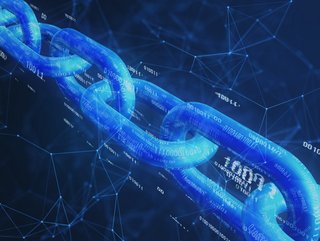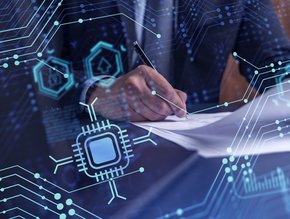Blockchain could help ambiguous AI make sense of messy data

Blockchain – the game-changing distributed ledger technology that powers cryptocurrencies like Bitcoin and a new generation of smart contract platforms – could help bring control to ambiguous artificial intelligence models.
And those organisations that refuse to see themselves as technology companies or treat data as a key business asset and do not take action may not remain in business long enough to see the next stage of the tech revolution, say experts.
“We have never lived in a time with so many transformative technologies. Tech trends like machine learning, robotics, blockchain, and the metaverse are revamping every business in every industry,” says futurist and business advisor Bernard Marr. “Because of the rapid pace of change, every business must think of itself as a tech company and put these digital transformations front and centre.”
Data is the lifeblood of successful companies, says Marr, but this comes with a huge responsibility. “Companies must keep information safe and comply with all applicable security legislation. The companies that succeed in the future will need to have a solid strategy in place that makes the most of their data while protecting partners and customers.”
Ambiguous AI can cause harm without machine learning
But there are challenges. On the one hand, we humans are ambiguous, indeterminable, and inherently unpredictable, explains Abeba Birhane, of University College Dublin, School of Computer Science, in the paper The Impossibility of Automating Ambiguity.
“On the other, Machine Learning (ML) systems that claim to predict human behaviour are becoming ubiquitous in all spheres of social life,” says Birhane. “Through the practice of clustering, sorting, and predicting human behaviour and action, these systems impose order, equilibrium, and stability to the active, fluid, messy, and unpredictable nature of human behaviour and the social world at large.”
When ML systems “pick up” patterns and clusters, this often amounts to identifying age-old conventions, and stereotypes which have become socially unacceptable. “Machine prediction of social behaviour, I argue, is not only erroneous but also presents real harm to those at the margins of society,” says Birhane.
Those who think of AI in strictly technical terms such as convolutional neural network (CNN) or generative adversarial networks (GAN) may not consider the massive amounts of data, computing power, and other resources required for a functional AI.
“This narrow conception of AI can be partly connected to the reductive
view that sees machines as fully-autonomous,” says Birhane. “However, machines are always human-machine systems. That is to say, machines are never fully autonomous but always human-machine systems that rely on human power and resources in order to function.”
Blockchain could help feed the world with trusted machine learning
Some see blockchain as the answer to such enormous data issues. And there can be no more important task for technology than the effective distribution of food to the global population.
“Key stakeholders in the food supply chain still rely on paper trails as part of food production, consumption, surplus, and wastage, making it more difficult to trace the trends in these statistics,” says Somdip Dey, Lecturer at the UK’s University of Essex and CEO of Nosh Technologies. “For example, supermarkets might be aware of how much food is being sold or stocked in inventory, however, they might not have accurate data on consumers' food consumption and wastage habits.”
The food supply chain needs to adopt standardised digitisation of the food data that could be achieved using blockchain technology since such technology makes it easier to trace and verify the source of the data, says Dey.
“At the same time, machine learning could be used on food data on the blockchain in the supply chain to understand patterns of consumption, surplus, and wastage throughout the supply chain such that if there is food surplus or wastage in areas, then they could be shifted in the areas inflicted with food insecurities.”
And blockchain-powered cryptocurrencies could be used to distribute money to those in need, says Dey. However, this would require enormous collaborative efforts across supply chains and governments, and could only be possible if cryptocurrencies were destigmatised.






